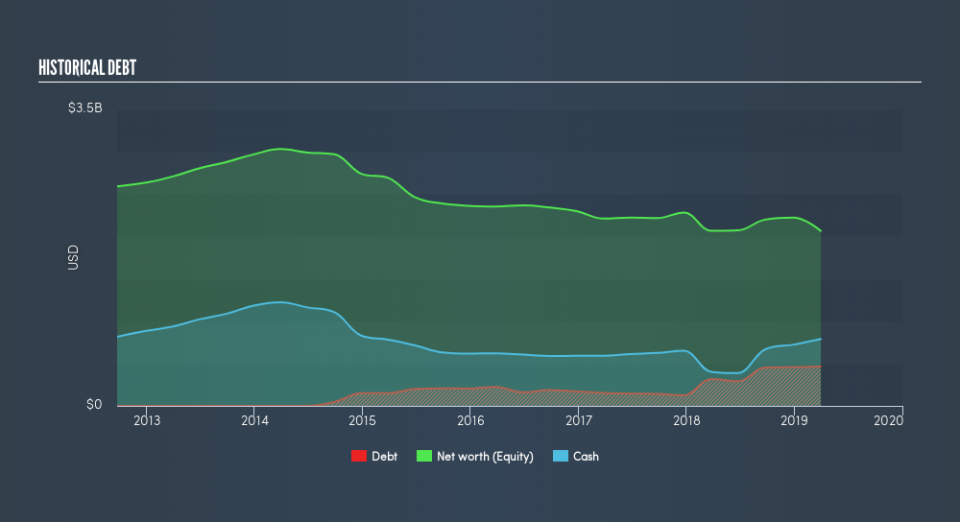Is Cree (NASDAQ:CREE) Using Debt Sensibly?

Legendary fund manager Li Lu (who Charlie Munger backed) once said, 'The biggest investment risk is not the volatility of prices, but whether you will suffer a permanent loss of capital.' When we think about how risky a company is, we always like to look at its use of debt, since debt overload can lead to ruin. We can see that Cree, Inc. (NASDAQ:CREE) does use debt in its business. But is this debt a concern to shareholders?
When Is Debt A Problem?
Generally speaking, debt only becomes a real problem when a company can't easily pay it off, either by raising capital or with its own cash flow. In the worst case scenario, a company can go bankrupt if it cannot pay its creditors. However, a more frequent (but still costly) occurrence is where a company must issue shares at bargain-basement prices, permanently diluting shareholders, just to shore up its balance sheet. By replacing dilution, though, debt can be an extremely good tool for businesses that need capital to invest in growth at high rates of return. The first thing to do when considering how much debt a business uses is to look at its cash and debt together.
View our latest analysis for Cree
How Much Debt Does Cree Carry?
You can click the graphic below for the historical numbers, but it shows that as of March 2019 Cree had US$463.5m of debt, an increase on US$316.0m, over one year. But it also has US$789.3m in cash to offset that, meaning it has US$325.8m net cash.
How Healthy Is Cree's Balance Sheet?
Zooming in on the latest balance sheet data, we can see that Cree had liabilities of US$334.4m due within 12 months and liabilities of US$498.8m due beyond that. Offsetting this, it had US$789.3m in cash and US$150.9m in receivables that were due within 12 months. So it actually has US$106.9m more liquid assets than total liabilities.
This state of affairs indicates that Cree's balance sheet looks quite solid, as its total liabilities are just about equal to its liquid assets. So it's very unlikely that the US$5.89b company is short on cash, but still worth keeping an eye on the balance sheet. Succinctly put, Cree boasts net cash, so it's fair to say it does not have a heavy debt load! When analysing debt levels, the balance sheet is the obvious place to start. But ultimately the future profitability of the business will decide if Cree can strengthen its balance sheet over time. So if you want to see what the professionals think, you might find this free report on analyst profit forecasts to be interesting.
Over 12 months, Cree reported revenue of US$1.7b, which is a gain of 58%. Shareholders probably have their fingers crossed that it can grow its way to profits.
So How Risky Is Cree?
Although Cree had negative earnings before interest and tax (EBIT) over the last twelve months, it generated positive free cash flow of US$54m. So taking that on face value, and considering the net cash situation, we don't think that the stock is too risky in the near term. We think its revenue growth of 58% is a good sign. There's no doubt fast top line growth can cure all manner of ills, for a stock. When we look at a riskier company, we like to check how their profits (or losses) are trending over time. Today, we're providing readers this interactive graph showing how Cree's profit, revenue, and operating cashflow have changed over the last few years.
At the end of the day, it's often better to focus on companies that are free from net debt. You can access our special list of such companies (all with a track record of profit growth). It's free.
We aim to bring you long-term focused research analysis driven by fundamental data. Note that our analysis may not factor in the latest price-sensitive company announcements or qualitative material.
If you spot an error that warrants correction, please contact the editor at editorial-team@simplywallst.com. This article by Simply Wall St is general in nature. It does not constitute a recommendation to buy or sell any stock, and does not take account of your objectives, or your financial situation. Simply Wall St has no position in the stocks mentioned. Thank you for reading.

